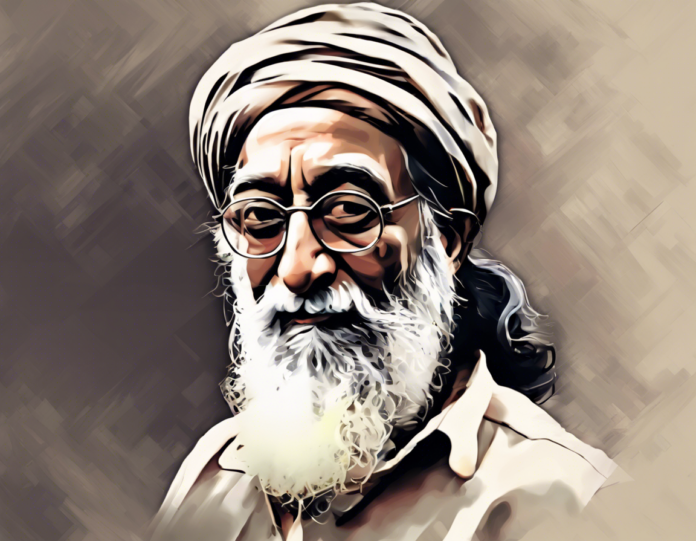It is said that a great writer has the ability to paint pictures with words, breathing life and emotion into their characters and settings. One such literary masterpiece that captures the essence of Indian society with its intricacies and complexities is “The Portrait of a Lady” by Khushwant Singh. Through vivid storytelling and compelling narrative, Singh weaves a tapestry of human emotions, relationships, and societal norms that resonate with readers even today.
Introduction to Khushwant Singh
Khushwant Singh, a prominent Indian author, journalist, and lawyer, is known for his bold and unapologetic writing style. Born in 1915 in Punjab, Singh’s literary works often explore themes of love, loss, identity, and religion against the backdrop of a rapidly changing India. With a career spanning several decades, Singh’s writing is marked by its realism, wit, and social commentary that reflect the complexities of Indian society.
The Plot of “The Portrait of a Lady”
“The Portrait of a Lady” follows the story of a young and independent woman, titled as “The Portrait,” who is navigating the challenges of love, marriage, and societal expectations in post-independence India. The protagonist, named Imtiaz, is a complex character who defies traditional gender roles and expectations, grappling with her desires and ambitions in a society that seeks to confine her.
As the narrative unfolds, Imtiaz’s journey is punctuated by encounters with various characters who shape her understanding of love, relationships, and personal freedom. From her tumultuous relationship with her childhood sweetheart, Amal, to her marriage to a man chosen by her family, Imtiaz’s experiences mirror the internal struggles faced by many women in a patriarchal society.
Through Imtiaz’s eyes, Singh delves deep into the complexities of human emotions, the clash between tradition and modernity, and the quest for self-identity in a rapidly changing world. The novel explores themes of love, betrayal, sacrifice, and redemption, offering a nuanced portrayal of human relationships and the societal forces that influence them.
Key Themes in “The Portrait of a Lady”
-
Gender Roles and Identity: The novel challenges traditional gender roles and explores the idea of female autonomy and independence in a conservative society.
-
Love and Relationships: The complexities of love, desire, and emotional bonds are central to the narrative, highlighting the impact of societal norms on personal relationships.
-
Social Norms and Expectations: Singh critically examines the constraints imposed by societal expectations and traditions on individuals, particularly women.
-
Self-Discovery and Individuality: Imtiaz’s journey towards self-discovery and asserting her individuality underscores the importance of personal freedom and agency.
Character Analysis
-
Imtiaz: The protagonist of the novel, Imtiaz is a strong, independent woman who challenges societal norms and seeks to define her own path in life.
-
Amal: Imtiaz’s childhood sweetheart, Amal represents the conflict between tradition and modernity, and the enduring power of love.
-
Imtiaz’s Husband: A symbol of patriarchal authority, Imtiaz’s husband embodies the oppressive forces that seek to control and subjugate women.
-
Supporting Characters: From Imtiaz’s family members to her friends and acquaintances, each character adds depth and complexity to the narrative, reflecting different facets of Indian society.
The Legacy of “The Portrait of a Lady”
“The Portrait of a Lady” remains a timeless classic that continues to resonate with readers for its evocative storytelling, rich character development, and profound exploration of human relationships. Singh’s nuanced portrayal of love, identity, and societal dynamics has cemented the novel’s place as a literary masterpiece that transcends time and culture.
Frequently Asked Questions (FAQs)
-
What inspired Khushwant Singh to write “The Portrait of a Lady”?
Khushwant Singh drew inspiration from his observations of Indian society and the challenges faced by women in navigating traditional norms and personal aspirations. -
How does “The Portrait of a Lady” reflect the changing landscape of post-independence India?
The novel provides a glimpse into the social, political, and cultural shifts occurring in India after gaining independence, highlighting the tensions between tradition and modernity. -
What role does religion play in the novel?
Religion serves as a backdrop for exploring themes of identity, morality, and societal expectations, adding layers of complexity to the characters’ interactions and decisions. -
Is “The Portrait of a Lady” relevant in today’s context?
Despite being set in a specific time period, the themes of love, gender dynamics, and individual freedom explored in the novel remain pertinent to contemporary discussions on societal norms and personal agency. -
How did critics receive “The Portrait of a Lady” upon its release?
The novel received critical acclaim for its bold narrative, well-defined characters, and insightful commentary on the human condition, establishing Khushwant Singh as a master storyteller.
In conclusion, “The Portrait of a Lady” stands as a testament to Khushwant Singh’s literary prowess and his ability to capture the essence of Indian society with unmatched clarity and depth. Through its exploration of love, identity, and societal expectations, the novel continues to endure as a timeless masterpiece that resonates with readers across generations.

